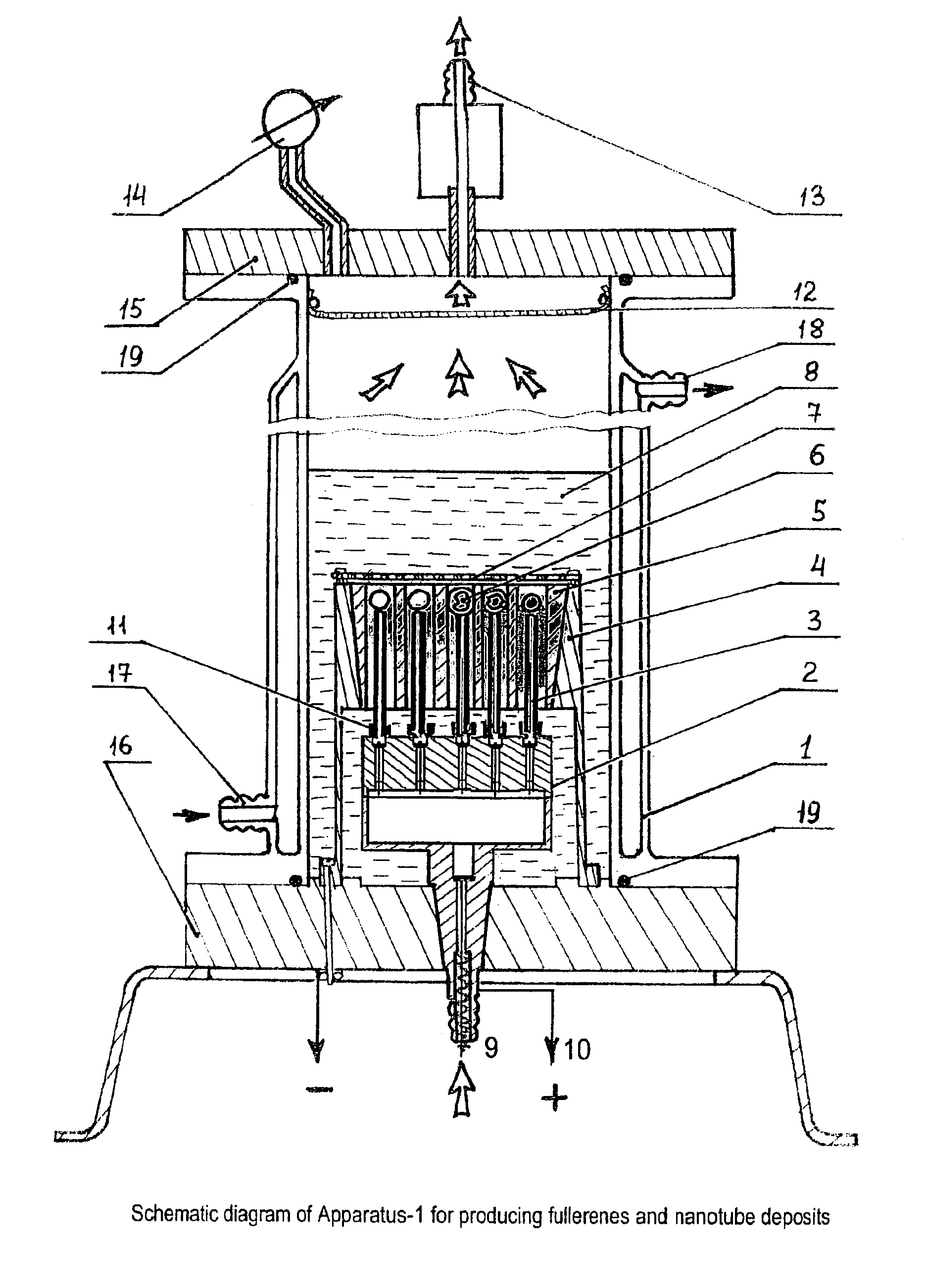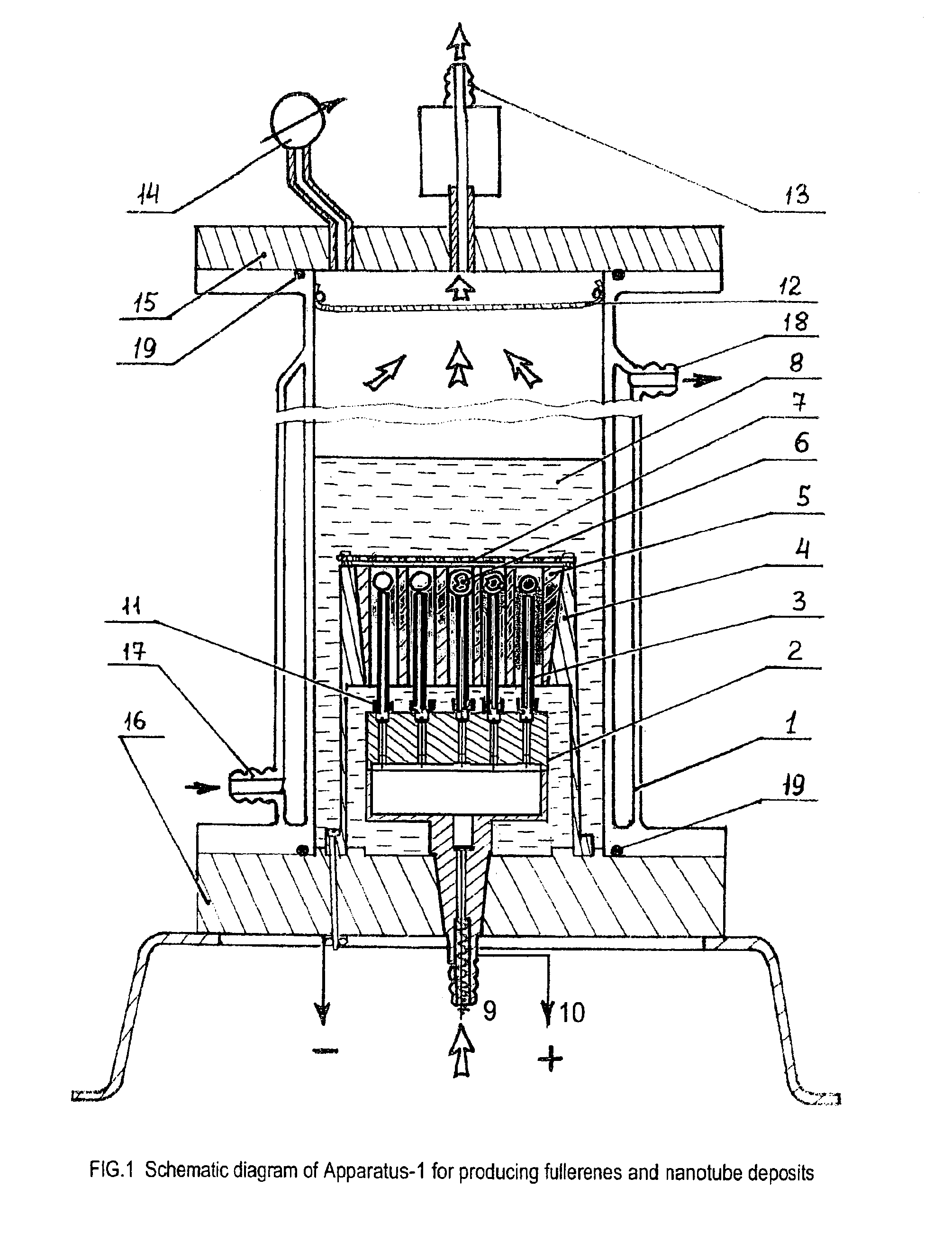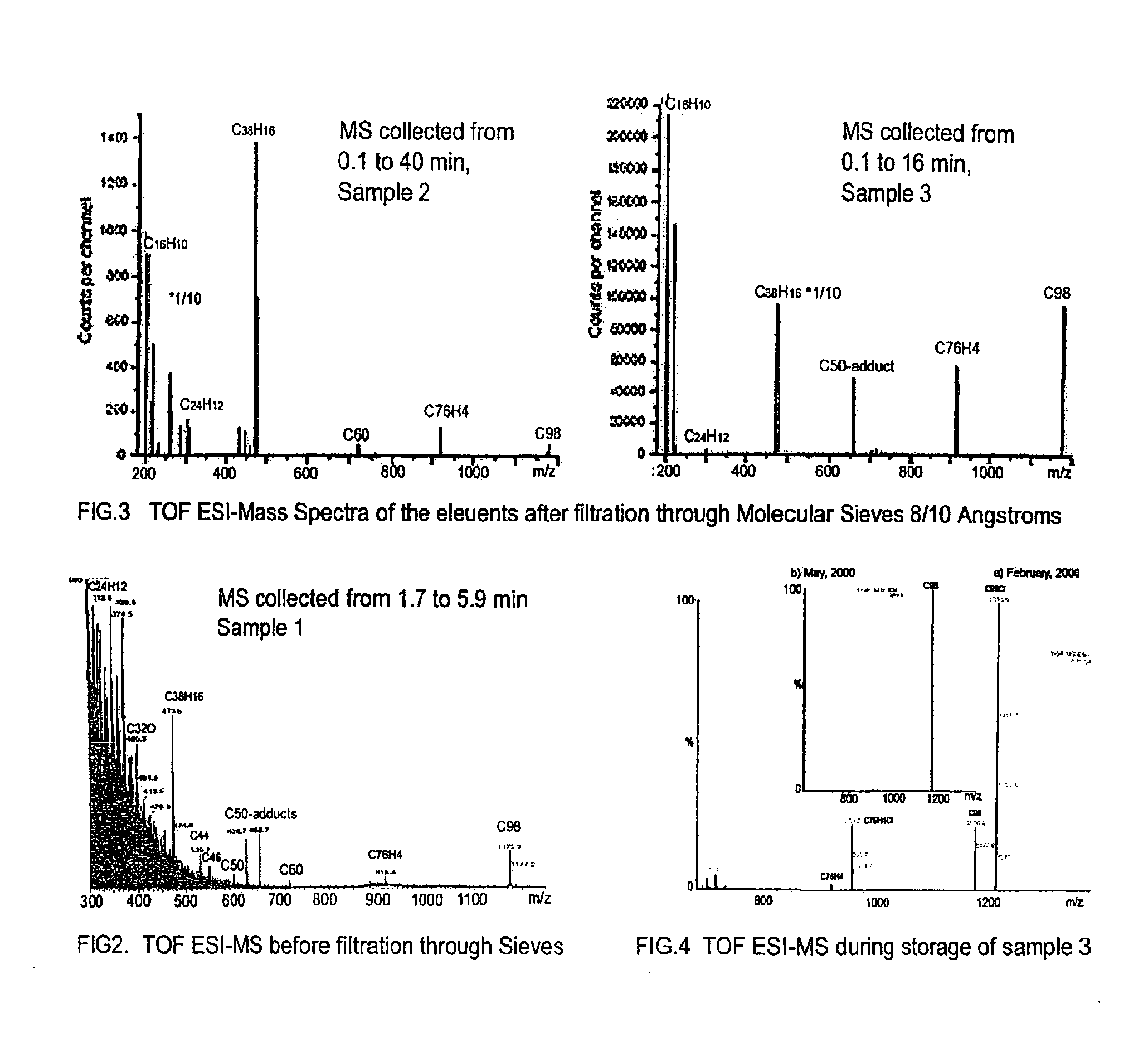Method and device for producing higher fullerenes and nanotubes
a technology of nanotubes and fullerenes, applied in the field of chemical technologies, can solve the problems of low yield of higher fullerenes, insufficient amounts of c90 and higher available to study their general properties, and high prices of swnts ($1,000-10), and achieve the effect of enhancing the production of fullerenes and simplifying the formation of fullerenes
- Summary
- Abstract
- Description
- Claims
- Application Information
AI Technical Summary
Benefits of technology
Problems solved by technology
Method used
Image
Examples
Embodiment Construction
[0116]The following example relates to FIGS. 1 to 8 and to the first aspect of the present invention defined above.
[0117]An individual cell of the device for producing fullerenes includes a hermetically sealed body 1, in which a holder 2 of the electrodes A (3) and a holder 4 of the electrode B (5), and spherical graphite contactors 6 are situated above the electrodes A below a metallic grid 7. This arrangement is immersed in a hydrocarbon liquid 8 and is connected to a valve 9 for flowing a buffer gas, and to a standard AC power supply 10 typically used for welding (three phase voltage, 53V, 50 Hz). Cylindrical graphite pipes 3 (electrodes A) with a smaller diameter are installed in holder 2 by using cylindrical ceramic insulators 11 and are connected to the holder using safety wires. The pipes are axially installed inside a vertical cylindrical opening of a graphite matrix 5 (electrode B).
[0118]FIG. 1 shows a design of the apparatus with 19 pairs of the electrodes / contactors verti...
PUM
| Property | Measurement | Unit |
|---|---|---|
| pressure | aaaaa | aaaaa |
| pressure | aaaaa | aaaaa |
| pressure | aaaaa | aaaaa |
Abstract
Description
Claims
Application Information
 Login to View More
Login to View More - R&D
- Intellectual Property
- Life Sciences
- Materials
- Tech Scout
- Unparalleled Data Quality
- Higher Quality Content
- 60% Fewer Hallucinations
Browse by: Latest US Patents, China's latest patents, Technical Efficacy Thesaurus, Application Domain, Technology Topic, Popular Technical Reports.
© 2025 PatSnap. All rights reserved.Legal|Privacy policy|Modern Slavery Act Transparency Statement|Sitemap|About US| Contact US: help@patsnap.com



